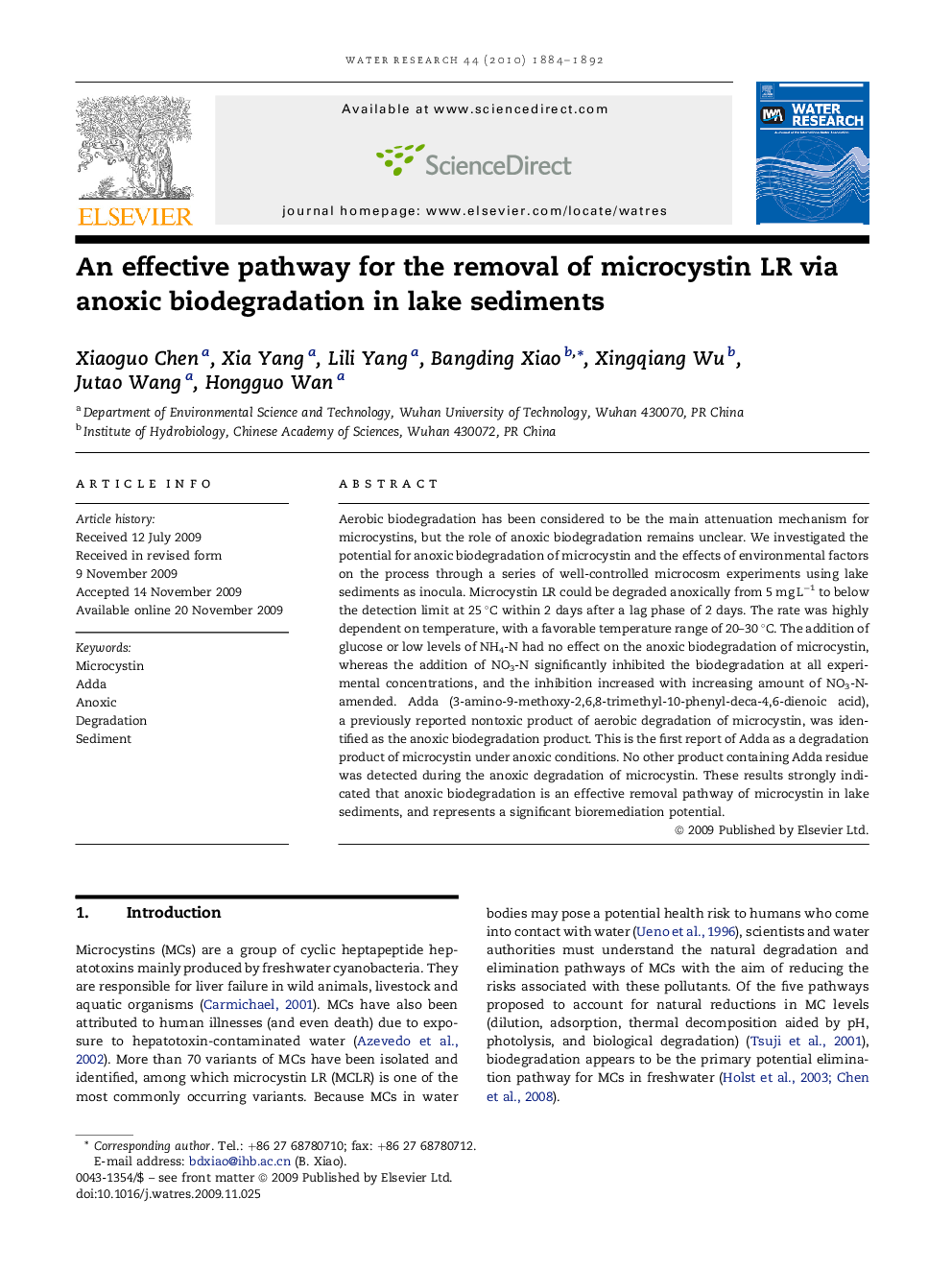| Article ID | Journal | Published Year | Pages | File Type |
|---|---|---|---|---|
| 4484167 | Water Research | 2010 | 9 Pages |
Aerobic biodegradation has been considered to be the main attenuation mechanism for microcystins, but the role of anoxic biodegradation remains unclear. We investigated the potential for anoxic biodegradation of microcystin and the effects of environmental factors on the process through a series of well-controlled microcosm experiments using lake sediments as inocula. Microcystin LR could be degraded anoxically from 5 mg L−1 to below the detection limit at 25 °C within 2 days after a lag phase of 2 days. The rate was highly dependent on temperature, with a favorable temperature range of 20–30 °C. The addition of glucose or low levels of NH4-N had no effect on the anoxic biodegradation of microcystin, whereas the addition of NO3-N significantly inhibited the biodegradation at all experimental concentrations, and the inhibition increased with increasing amount of NO3-N-amended. Adda (3-amino-9-methoxy-2,6,8-trimethyl-10-phenyl-deca-4,6-dienoic acid), a previously reported nontoxic product of aerobic degradation of microcystin, was identified as the anoxic biodegradation product. This is the first report of Adda as a degradation product of microcystin under anoxic conditions. No other product containing Adda residue was detected during the anoxic degradation of microcystin. These results strongly indicated that anoxic biodegradation is an effective removal pathway of microcystin in lake sediments, and represents a significant bioremediation potential.
